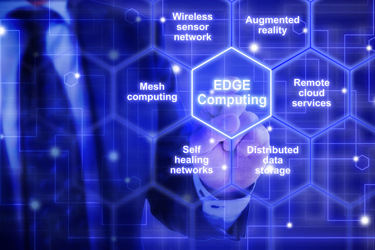How Do MSPs Benefit From Edge Computing?
By Megan R. Nichols

The Internet of Things may be about to transform the MSP market.
Businesses of all sizes are adopting IoT solutions that rely on cloud-driven, real-time analytics. One company may have hundreds or thousands of devices sending data to the cloud, where it's processed in a way they can use. Cloud-based analytics can guide the movement of an autonomous warehouse robot, adjust a grocery store display based on what consumers are looking at or shut down equipment that's close to overheating.
For many of these businesses, relying on current methods will create latency that's undesirable or unacceptable. Edge computing is an old idea that's gaining new life through wider adoption of real-time analytics. MSPs may be in a great position to benefit from the growth of this tech.
Why IoT Needs Computing Power at the Edge
Many IoT devices and networks rely on the cloud to run analytics they use to make decisions.
For these devices or networks, latency can be a serious problem — even if the delay is just a few milliseconds. If an autonomous car is trying to determine whether it should accelerate or brake, the fastest possible response from the cloud is important. If a surgeon's hand movements are being recorded, smoothed, and sent to a surgical robot, a slight lag in the algorithm could translate to a jumpy misread movement.
These are extreme examples, but even in situations where lag isn't devastating, it can mean real-time analytics quickly become not so immediate. This can slow down a company's ability to react to changes or prevent an individual device from making the right adjustments.
Edge computing solves this problem by distributing some of the workload to nodes at the edge of the network. These nodes, which are closer to network-edge devices, can respond to simpler requests faster than the cloud can. This approach makes real-time analytics much more realistic and less of a buzzword.
With edge computing, this analytical work happens closer to the devices themselves, reducing lag. This is good for some applications and necessary for others. If you have a client relying on the cloud for real-time analytics, edge computing is one way to guarantee it happens.
The Benefits of Managing Edge Computing
Cloud computing is growing fast. The market was worth more than $150 billion in 2014 — in 2019, that value had almost doubled to be worth $266 billion. The IoT market is moving at a similar pace.
Businesses that continue to ramp up their adoption of IoT tech may find lag time is severely impacting their ability to manage IoT devices and perform analytics. Right now, it's not clear who businesses will turn to for edge computing if they can't build their own solutions in-house. This is where ambitious MSPs can come in.
MSPs are probably in the best position to build and manage edge computing sites. Most businesses don't have the resources or labor needed to do this on their own. MSPs can take advantage of this need. They can offer unique services that are necessary to optimize the latency of IoT devices.
The Potential Challenges of Edge Computing for MSPs
There are some risks to jumping on edge computing right now. We're still in the early days of the approach, meaning very little about edge computing has been standardized. Right now, as IoT and real-time analytics become more popular, the number of edge computing consortiums is multiplying fast. It may be some time before it's clear which standard or standards will be adopted across the industry.
Early adopters may have to retrofit or otherwise adjust edge computing setups as industry practices become more standard.
Competing standards may make adoption and management of edge computing sites somewhat chaotic in the near-term.
Building edge computing nodes may also require some significant buy-in. While these nodes won't need nearly as much computing power as a data center, they will still require a considerable amount of additional hardware. Your MSP will need to purchase, maintain, and coordinate this tech.
It's very likely, however, that the benefits of adopting edge computing now will outweigh these potential risks.
How Edge Computing May Change the MSP Industry
The adoption of cloud-based analytics and IoT tech continues to accelerate. Many of the businesses that are adopting this tech will need real-time processing of some kind. After all, the lag between IoT devices and the cloud may be unacceptable for some.
Edge computing can handle this problem, but few businesses have the expertise or cash needed to build and maintain edge computing nodes. MSPs may be able to fill the niche and offer a valuable service to these IoT adopters.
There are some potential pitfalls for MSPs that invest in edge computing right now. However, the benefits they may gain from being one of the first to offer managed edge computing could be major.
About The Author
Megan R. Nichols is an industrial writer for sites like Thomas and IoT Evolution World. Megan also publishes easy to understand manufacturing articles on her blog, Schooled By Science. Keep up with Megan by subscribing to her blog.
